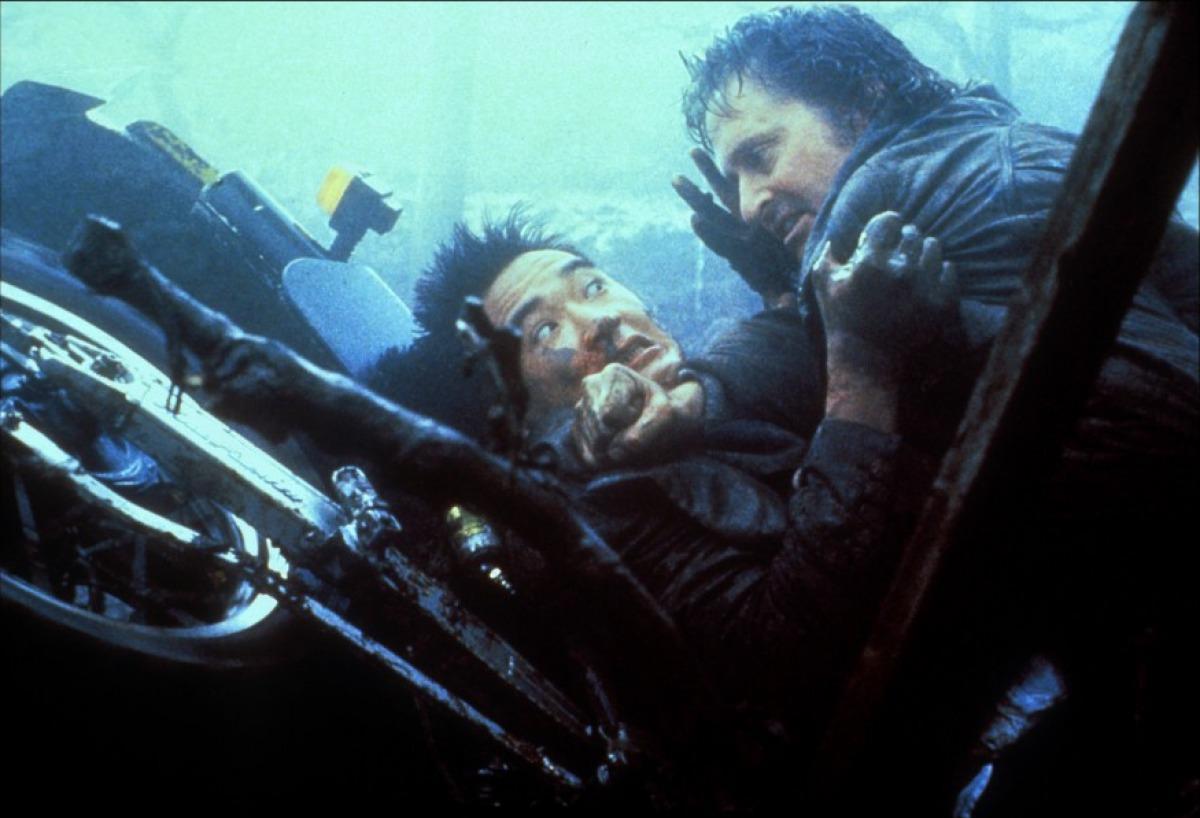The use of iron in both structural and decorative ironwork plays a surprisingly pivotal role in film history. Far from mere background detail, ironwork can deeply influence a scene’s atmosphere, imbue it with rich symbolism, and even drive the narrative forward. This blog post delves into the subtle artistry of ironwork in cinema, exploring its multifaceted contributions to some of the most iconic movie scenes.
Read more: Celebrity Homes Showcase Iron Work
Iconic Ironwork Scenes in Cinema
“The Crow” (1994)
In “The Crow,” the rain-soaked, iron-heavy urban landscape is not just a setting but a character in its own right. The gothic atmosphere of the movie is palpably shaped by the omnipresent ironwork — from the fire escapes to the fences that line the dark, damp streets. This ironwork complements the film’s themes of revenge and resurrection, casting shadows that add to the haunting, otherworldly ambiance of Eric Draven’s quest for vengeance (Stars Insider).
“Black Rain” (1989)
“Black Rain” plunges viewers into the iron-clad underbelly of Tokyo, where the story of a stylish crime thriller unfolds. The movie’s title itself carries a dual reference to the aftermath of the atomic bombings and the relentless downpour that characterizes the film. Iron structures and the persistent rainfall in Tokyo’s nightscape interweave to create a visually stunning narrative, symbolizing the murky moral ground the protagonists navigate.
Symbolism and Ironwork
“In Cold Blood” (1967)
The adaptation of Truman Capote’s “In Cold Blood” uses ironwork to chilling effect. The scene featuring iron bars and rain not only visually represents imprisonment but also enhances the film’s bleakness. It underscores the inevitability of fate for its characters, trapped by their actions and circumstances, in a world where escape seems as unattainable as freedom from the iron bars themselves (Stars Insider).
<script> <iframe width=”560″ height=”315″ src=”https://www.youtube.com/embed/vU_TY9ZQ48A?si=jxELyoJrJwjkl947″ title=”YouTube video player” frameborder=”0″ allow=”accelerometer; autoplay; clipboard-write; encrypted-media; gyroscope; picture-in-picture; web-share” referrerpolicy=”strict-origin-when-cross-origin” allowfullscreen></iframe> </script>
“Shutter Island” (2010)
In “Shutter Island,” iron gates and stormy weather serve as powerful symbols of confinement and psychological turmoil. The ironwork here is emblematic of the mental prison in which Teddy Daniels finds himself, with the tempestuous weather mirroring the tumult within. These elements collectively deepen the mystery and suspense, suggesting that the true barriers to understanding may be internal rather than external (Stars Insider).
Ironwork as a Narrative Device
“Aliens” (1986)
The sequel to the sci-fi horror classic “Alien,” “Aliens,” leverages ironwork to amplify the sense of looming dread. As a marine unit navigates through iron structures amidst torrential rain on a desolate planet, the setting itself foreshadows the claustrophobic horror to come. The ironwork here is not merely scenery but a harbinger of the challenges and terrors that lie ahead (Stars Insider).
“Sorcerer” (1977)
One of “Sorcerer’s” most gripping scenes involves trucks carrying nitroglycerine across a fragile iron bridge during a storm. The tension is palpable, as the ironwork of the bridge groans under the strain, embodying the precarious balance between life and death. This scene masterfully uses ironwork to highlight the theme of man versus nature, with every creak and sway intensifying the suspense (Stars Insider).
The Aesthetic of Ironwork in Film
“Foreign Correspondent” (1940)
Alfred Hitchcock’s “Foreign Correspondent” features a memorable assassin scene set against a backdrop of ironwork in Amsterdam. The intricate ironwork adds not just aesthetic beauty but also contributes to the suspense, as the assassin navigates through a rain-drenched cityscape. Hitchcock’s use of ironwork in this scene underscores his mastery of visual storytelling, where even the environment plays a crucial role in the narrative (Stars Insider).
“Lord Jim” (1965)
The storm scene in “Lord Jim” features a ship’s ironwork as a central element, reflecting the internal struggle of the protagonist. As Peter O’Toole’s character faces a critical moral decision, the tempest outside mirrors his internal conflict, with the ship’s ironwork standing as a testament to the turbulent journey of self-discovery and redemption he undergoes.
Conclusion
Ironwork in cinema serves as more than just a component of the physical setting; it is a versatile tool in the filmmaker’s arsenal, capable of enhancing the narrative, atmosphere, and thematic depth of a film. From creating symbolic landscapes to amplifying suspense and emotional intensity, the craft behind the use of ironwork in movies is a testament to the medium’s power to convey complex ideas






